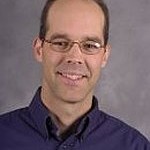 On Tuesday, January 13, Professor Raymond Shaw, expert on Lake Superior, will lead a discussion about lake effect snow. The event is part of a monthly series of sessions on the Geoheritage and Natural History of the Keweenaw, at the Carnegie Museum in Houghton. The discussions are aimed at the general public, but discuss current research and science.
On Tuesday, January 13, Professor Raymond Shaw, expert on Lake Superior, will lead a discussion about lake effect snow. The event is part of a monthly series of sessions on the Geoheritage and Natural History of the Keweenaw, at the Carnegie Museum in Houghton. The discussions are aimed at the general public, but discuss current research and science.
Professor Shaw explains his discussion: “Whether you enjoy skiing, snow shoeing, or sledding, and in fact even if you simply endure the snow shoveling, lake effect snow is part of daily life in the Keweenaw for almost half of the year. Our peninsular home is surrounded by Lake Superior, which when conditions are right, becomes a giant snow-making machine. Just as the water in a pot on a hot stove overturns and mixes, the cold air blowing over relatively hot Lake Superior rises and forms banded patterns. The clouds that form in the updrafts contain millions of water droplets that remain liquid even below freezing temperatures. A few of those droplets are lucky enough to come into contact with relatively rare particles able to stimulate the freezing process, and those favored few ice crystals then grow rapidly and eventually fall from the cloud as snowflakes, accumulating on the ski trails and on your driveway… express delivery, straight from the big lake! Many mysteries remain about the details of lake effect snow, so come learn some of what we know and what we are trying to learn about this aspect of life in the Keweenaw.”
The Carnegie Museum of the Keweenaw, located at Huron & Montezuma in downtown Houghton. Seminars are held in the recently restored Community Room on the ground level of this historic building. Lectures are free, open to the public, and barrier free (wheelchair accessible). For each monthly lecture, the museum will open at 6:30 pm for refreshments; lectures and discussion occur from 7:00 to 8:00 pm. Please contact the Museum for further information, 906-482-7140.